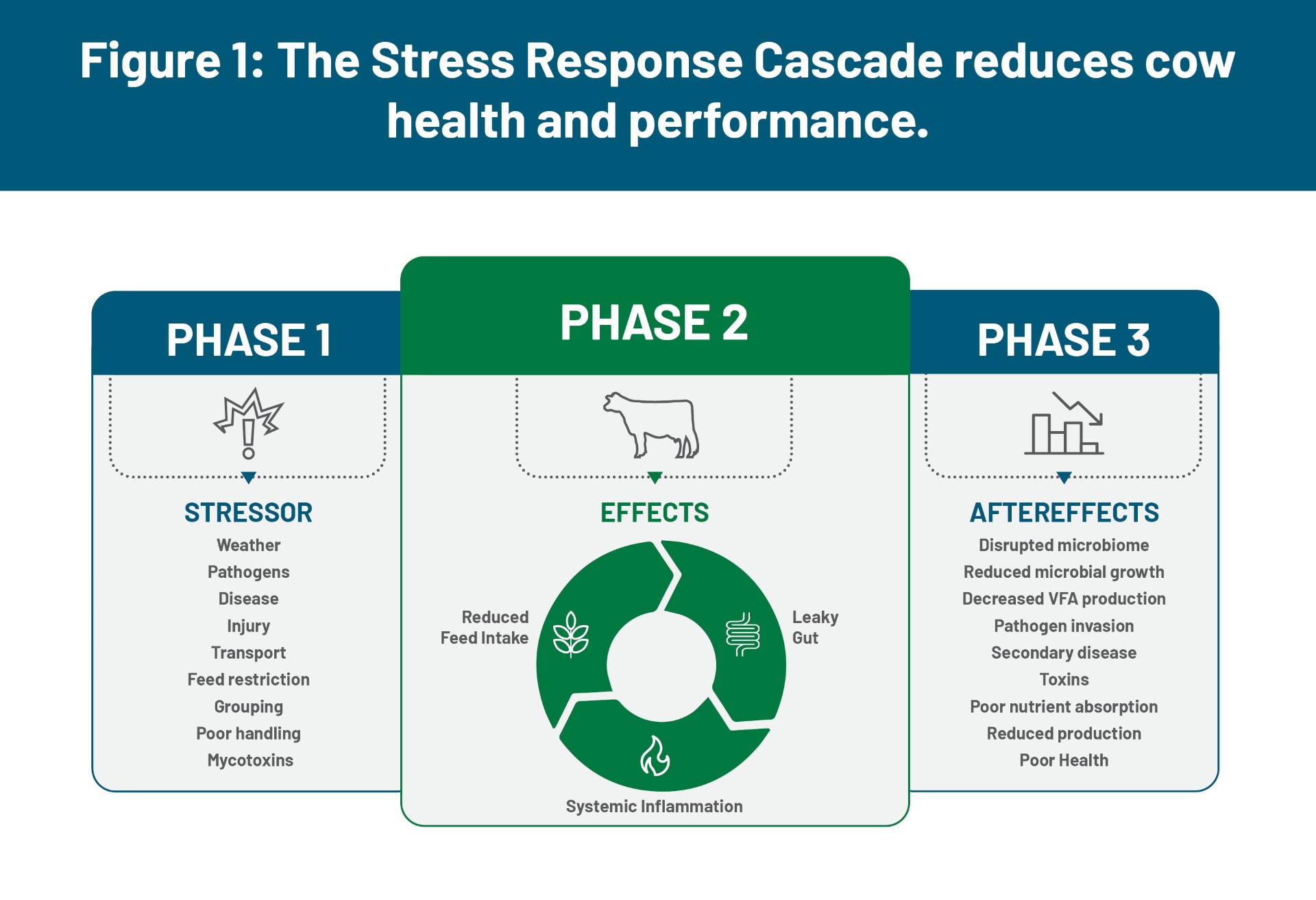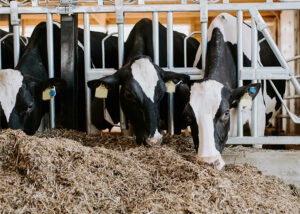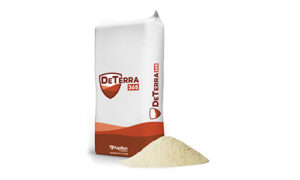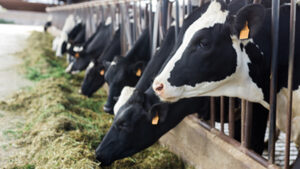The term, leaky gut, has received a lot of press over the last several years thanks to in-depth research on the subject. By definition, leaky gut occurs when intestinal permeability increases, resulting in damaged gut villi, poor nutrient absorption and an increased risk of pathogens and toxins invading the blood stream.
But that is only a small part of the story. In reality, leaky gut is one small component of a larger 3-phase Stress Response Cascade, which reduces cow health and productivity (Figure 1).
Phase One: The initial stressor
First, the cow encounters a stressor. This includes a myriad of things such as weather extremes, bacterial, viral, or fungal pathogens, injury, transportation, off-feed events, group changes, poor handling, incomplete nutrition, abrupt diet changes and/or mycotoxins.
Phase Two: A trio of negative effects
After encountering a stressor, the cow experiences a trio of negative effects. These include reduced feed intake, development of leaky gut and systemic inflammation. The order in which these three effects occur is driven by the initial stressor.
This trio damages cow health by reducing nutrient absorption and energy availability to the cow, increasing the risk of pathogen colonization in the gut, allowing pathogens and toxins to enter the bloodstream and increasing the risk of membrane damage in other parts of the body, such as the mammary gland, reproductive tract, lungs or skin.
Phase Three: Reduced health and productivity
In the aftereffects phase, cows face negative secondary outcomes as a result of the damage caused in phase two. These include reduced rumen microbial growth and VFA production, a disrupted microbiome, pathogen and toxin invasion in the body, poor nutrient absorption and secondary infections, such as respiratory disease or mastitis. The net effect of this whole process is a cow with reduced health and productivity.
Strategies to reduce stress
So how can we stop this cascade from happening? By considering five key strategies:
- High-quality cow management
- Breeding for more resilient cows
- Feeding a high-quality and consistent diet
- Implementing a good vaccine and antibiotic protocol
- Utilizing a precise and effective additive program
Focusing on the latter, additives are non-nutritional substances consumed or applied to the animal that impact the microbiome, immune system, gut receptors and gut health—all things that are impacted during the Stress Response Cascade. Common additive categories include prebiotics, probiotics, postbiotics, enzymes, plant compounds, organic acids and novel compounds.
When used correctly, additives can help interrupt the Stress Response Cascade. During phase one, additives prevent stressors, particularly pathogens and mycotoxins, from damaging the gut. If a cow reaches phase two, additives reduce the trio of negative events inside the cow by supporting intake, optimizing energy absorption from the diet, improving gut integrity and modulating the immune system so it mounts an appropriate immune response. And if a cow makes it to phase three, additives can help re-establish a healthy gut microbiome and support repair of damaged tissue.
The best time to start using an additive is before a stressor has hit, but once a cow is in the cascade, additives can be brought in to prevent further damage and assist systemic repair.
To get the full benefits of additives, it is important to understand product-specific modes of action, as well as how best to combine different additives to get the most robust response in the cow. With proper use, additives can be an effective and economical tool for managing the Stress Response Cascade and preventing a loss of cow health and productivity.





